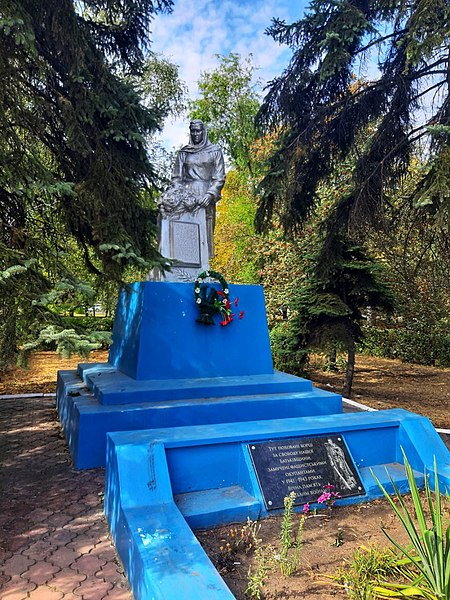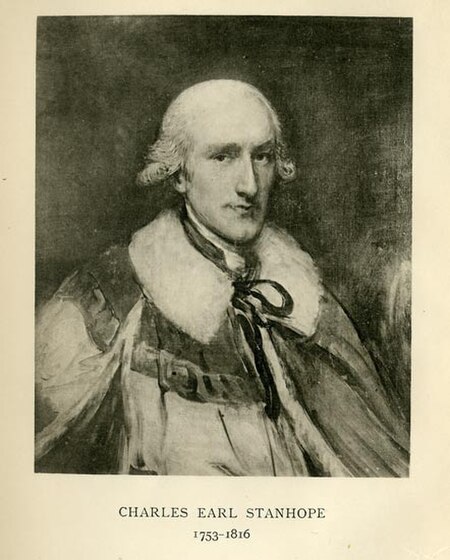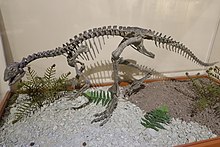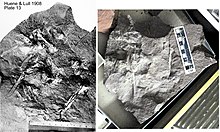Nanosaurus
| |||||||||||||||||||||||||||||||||||||
Read other articles:

Группа Семи острововнорв. Sjuøyane Карта семи островов Характеристики Количество островов8 Крупнейший островОстров Филиппа Общая площадь65[1] км² Население0 чел. (2012) Расположение 80°41′ с. ш. 20°57′ в. д.HGЯO АрхипелагШпицберген АкваторияСеверный Ледо…

Keraton Kartasuraꦏꦫꦠꦺꦴꦤ꧀ꦏꦂꦡꦯꦹꦫKaraton KartasuraPeta Kartasura, sketsa oleh Balai Arkeologi Yogyakarta.Location within SukoharjoTampilkan peta SukoharjoKeraton Kartasura (Jawa)Tampilkan peta JawaInformasi umumJenisKeraton (telah hancur)Gaya arsitekturArsitektur JawaLokasiKabupaten SukoharjoNegaraIndonesiaKoordinat7°33′25″S 110°44′25″E / 7.557082831131126°S 110.74026636549284°E / -7.557082831131126; 110.74026636549284Diresmikan11 Septem…

Legendary king of Denmark Sigurd Snake-in-the-EyeEngraving from 1670Legendary kings of DenmarkReignc. 873?PredecessorHalfdan RagnarssonSuccessorHarthacnut I, Helge or Olof the BrashBornSigurd ÁslaugssonDied887 AD (killed in Frisia)DynastySigfredianFatherRagnar LothbrokMotherÁslaugReligionNorse Paganism Sigurd Snake-in-the-eye (Old Norse: Sigurðr ormr í auga) or Sigurd Ragnarsson was a semi-legendary Viking warrior and Danish king active from the mid to late 9th century. According to multiple…

Isometric graphics redirects here. For isometric projection in general, see Isometric projection. Type of video game graphics Screenshot of the isometric video game Daimonin Part of a series onVideo game graphics Types 2.5D & 3/4 perspective First-person view Fixed 3D Full motion video based game Graphic adventure game Isometric video game graphics Side-scrolling video game Stereoscopic video game Text-based game Third-person view Tile-based video game Top-down perspective Vector game Topics…

Japanese Buddhist mantra An inscription of Nam Myōhō Renge Kyō by Japanese artisan Hasegawa Tohaku. Toyama, Japan. Circa Momoyama period, 1568. Part of a series onBuddhism Glossary Index Outline History Timeline The Buddha Pre-sectarian Buddhism Councils Silk Road transmission of Buddhism Decline in the Indian subcontinent Later Buddhists Buddhist modernism DharmaConcepts Four Noble Truths Noble Eightfold Path Dharma wheel Five Aggregates Impermanence Suffering Not-self Dependent Origination …

Joseph CampbellJoseph Campbell pada akhir tahun 1970-anPekerjaanSejarawanKebangsaanAmerika SerikatPasanganJean Erdman Campbell,Dancer/Choreographer Joseph John Campbell (26 Maret 1904 – 30 Oktober 1987) adalah mitolog penulis, dan dosen Amerika Serikat. Dia terkenal karena karyanya dalam bidang mitologi perbandingan dan agama perbandingan. Salah satu frasanya yang terkenal adalah ikuti kebahagiaanmu.[1] Catatan kaki ^ Campbell's biography and Joseph Campbell: Follow Your …

FranceFIBA zoneFIBA EuropeNational federationFrench Federation of BasketballU21 World ChampionshipAppearances1Medals Silver: 1 (1993)U20 European ChampionshipAppearances23Medals Gold: 2 (2010, 2023) Silver: 2 (2009, 2012) Bronze: 4 (1992, 2002, 2011, 2017) The France men's national under-20 basketball team is a national basketball team of France, administered by the French Federation of Basketball.[1][2] It represents the country in men's international under-20 basketball competi…

ناظم حكمت (بالتركية: Nâzım Hikmet Ran) معلومات شخصية الميلاد 17 يناير 1902سالونيك الدولة العثمانية الوفاة 3 يونيو 1963 (61 عام)موسكو جمهورية روسيا السوفيتية الاتحادية الاشتراكية الاتحاد السوفيتي سبب الوفاة نوبة قلبية مكان الدفن نوفوديفتشي الجنسية تركي وروسي الديانة ملحد…

National Gendarmerie force of the Republic of Turkey Law enforcement agency Gendarmerie General CommandJandarma Genel KomutanlığıEmblem of the Gendarmerie General CommandFlag of the Gendarmerie General CommanderAgency overviewFormed1839[1]Preceding agenciesGendarmerie OrganisationOttoman GendarmerieEmployees198,317 active personnel[2]Jurisdictional structureOperations jurisdictionTurkeyGeneral natureGendarmerieOperational structureHeadquartersAnkaraElected officer responsibleA…

Billiards games played on cloth-covered pocketless tables Not to be confused with the board game carrom. Carom billiardsA carom billiard table and billiard ballsHighest governing bodyUnion Mondiale de Billard (UMB)First played18th century FranceCharacteristicsContactNoTeam membersSingle opponents, doubles or teamsMixed-sexYes, sometimes in separate leagues/divisionsTypeIndoor, table, cue sportEquipmentBilliard ball, billiard table, cue stickVenueBilliard hall or home billiard roomPresenceOl…

City in Donetsk Oblast, Ukraine City in Donetsk Oblast, UkraineHirnyk ГірникCityHirnykShow map of Donetsk OblastHirnykShow map of UkraineCoordinates: 48°03′N 37°22′E / 48.050°N 37.367°E / 48.050; 37.367Country UkraineOblastDonetsk OblastRaionPokrovsk RaionHromadaKurakhove urban hromadaFounded1938City status27 September 1958Area[1] • Total5.1 km2 (2.0 sq mi)Population (2022) • Total10,357 • …

Sporting event delegationGuatemala at the1996 Summer OlympicsIOC codeGUANOCGuatemalan Olympic CommitteeWebsitewww.cog.org.gt (in Spanish)in AtlantaCompetitors26 (25 men, 1 woman) in 11 sportsFlag bearer Julio René MartínezMedals Gold 0 Silver 0 Bronze 0 Total 0 Summer Olympics appearances (overview)19521956–1964196819721976198019841988199219962000200420082012201620202024 Guatemala competed at the 1996 Summer Olympics in Atlanta, United States. 26 competitors, 25 men and 1 woman, to…

Series of notebook computers created by Apple Computer This article needs additional citations for verification. Please help improve this article by adding citations to reliable sources. Unsourced material may be challenged and removed.Find sources: PowerBook G4 – news · newspapers · books · scholar · JSTOR (March 2023) (Learn how and when to remove this message) PowerBook G4An aluminum PowerBook G4 with a 15.2-inch screenDeveloperApple ComputerTypeLaptop…

British scientist (1753–1816) The Right HonourableThe Earl StanhopeFRSPortrait of Earl Stanhope by John OpieMember of Parliament for Wycombe with Robert WallerIn office18 October 1780 – 1786Preceded byThomas FitzMauriceSucceeded byEarl Wycombe Personal detailsBorn3 August 1753Died15 December 1816 (1816-12-16) (aged 63)Political partyWhigSpouse(s)Lady Hester Pitt Louisa GrenvilleChildren6Parent(s)Philip Stanhope, 2nd Earl StanhopeGrizel Hamilton Charles Stanhope, 3rd Earl S…

Georgian (ქართული kartuli) is a Kartvelian language spoken by about 4 million people, primarily in Georgia but also by indigenous communities in northern Turkey and Azerbaijan, and the diaspora, such as in Russia, Turkey, Iran, Europe, and North America. It is a highly standardized language, with established literary and linguistic norms dating back to the 5th century.[1] There are at least 18 dialects of the language. Standard Georgian is largely based on the prestige Kart…

Monegaw Township Administration Pays États-Unis État Missouri Comté Saint Clair Type de localité Township GNIS 767316 Démographie Population 192 hab. (2020) Géographie Coordonnées 38° 09′ nord, 93° 53′ ouest Altitude 264 m Fuseau horaire CST (UTC-6) Divers Fondation 1841[1] Localisation Géolocalisation sur la carte : États-Unis Monegaw Township Géolocalisation sur la carte : États-Unis Monegaw Township Géolocalisation sur la carte : …

Adelaide Thunderbirds season Adelaide Thunderbirds2010 seasonHead coachJane Woodlands-ThompsonAsst. coachesLisa AlexanderJudy GreenwoodManagerCatherine ForemanCo-captainsNatalie von BertouchMo'onia GerrardVice-captainSharni LaytonMain venueETSA ParkSeason resultsWins–losses11–4Regular season2ndFinals placing1st Team colours Adelaide Thunderbirds seasons← 2009 2011 → The 2010 Adelaide Thunderbirds season saw Adelaide Thunderbirds compete in the 2010 ANZ Championship…

Turkish-Bulgarian singer This biography of a living person needs additional citations for verification. Please help by adding reliable sources. Contentious material about living persons that is unsourced or poorly sourced must be removed immediately from the article and its talk page, especially if potentially libelous.Find sources: Fiki – news · newspapers · books · scholar · JSTOR (December 2017) (Learn how and when to remove this message) In this Bulga…

Sparks FlyLagu oleh Taylor Swiftdari album Speak NowDirilis18 Juli 2011 (2011-07-18)FormatCD singleGenreCountry rockDurasi4:22LabelBig MachinePenciptaTaylor SwiftProduser Nathan Chapman Taylor Swift Sparks Fly adalah lagu karya penyanyi-penulis lagu asal Amerika Serikat Taylor Swift untuk album studio ketiganya, Speak Now (2010). Lagu ini ditulis sendiri oleh Swift dan diproduseri oleh Swift dan Nathan Chapman. Swift menulis lagu ini ketika usianya 16 tahun, sebelum ia merilis lagu Tim McGr…

Real Villa della FavoritaLa facciata della Real Villa della Favorita sul Miglio d'Oro a ErcolanoLocalizzazioneStato Italia RegioneCampania LocalitàErcolano Coordinate40°48′01.04″N 14°21′17.06″E40°48′01.04″N, 14°21′17.06″E Informazioni generaliCondizioniurgenza di recupero e restauro Costruzione1762 - 1792 Inaugurazione1768 Piani2 RealizzazioneArchitettoFerdinando Fuga ProprietarioMinistero della giustizia CommittenteStefano Reggio e Gravina, principe di Aci e Campofiori…








